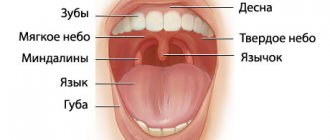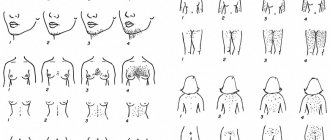Anticonvulsants appeared only 100 years ago. Over the past decades, scientists and manufacturers have been discovering new compounds and bringing new drugs to the market. How to make the right choice?
Cramps are involuntary muscle contractions. They can also occur in healthy people after overloading certain muscles, for example, in athletes, violinists, or during hypothermia in water. When falling asleep and during sleep, convulsive involuntary twitching is common. But various types of seizures can also be symptoms of epilepsy.
Epilepsy
Epileptic seizures that occur without any apparent reason two or more times can be considered epilepsy. An epileptic seizure is an abnormal or excessive discharge of neurons in the brain with visible manifestations. Visible manifestations are not always convulsions and loss of consciousness, they can be:
- only changes in consciousness;
- mental manifestations;
- motor changes;
- vegetative manifestations.
For a particular person, these symptoms can be in the form of ringing in the ears, flashes of light or flame, redness of the face, short-term disturbances in speech, memory and many others. It depends on where the nerve impulse went out of control and activated a particular area of the brain. Moreover, these changes may be first noticed by another person, and not by the patient himself. This can happen, for example, with episodes of freezing for a few seconds. If these symptoms have a clear cause, such as a head injury or a brain tumor, it is not epilepsy.
There are many forms of epilepsy depending on the type of epileptic seizures, types of epilepsy and status epilepticus (an epileptic seizure lasting more than 30 minutes at once or a series of seizures without full recovery of consciousness).
If the symptoms have a clear cause, then it is not epilepsy.
Night cramps in older women
Age-related changes in the body often affect the condition of the lower extremities. Elderly people often complain of varicose veins, kidney problems, diuresis disorders, and neurological diseases. All this is a prerequisite for the development of involuntary muscle contractions. Over time, spasms can progress: if night cramps in women after 50-60 years of age occur in 30% of cases, then in those over 80, the frequency of painful muscle spasms reaches 50%.
Convulsions
You might think that seizures occur only with epilepsy. Therefore, when they appear, anticonvulsants are definitely needed. In addition to epilepsy, there may be many other conditions that have nothing to do with it, but which may be accompanied by seizures:
- Cerebrovascular disease, age over 75 years, and hemorrhagic strokes often cause the onset of acute symptomatic seizures.
- Traumatic brain injuries.
- Infectious diseases of the central nervous system (meningitis, encephalitis, HIV infection).
- Oxygen starvation of the brain.
- Intoxication of the body.
- Taking medications.
- Acute metabolic disorders, for example, hypoglycemia in the treatment of diabetes mellitus, electrolyte imbalance.
- Withdrawal syndrome when stopping alcohol consumption.
- Taking large doses of alcohol.
- Taking psychotropic drugs (psychotropic stimulants - cocaine, crack, ecstasy).
- Temperatures above 38.5°C in children under 7 years of age can cause febrile seizures.
- Liver failure.
- Parkinson's disease.
Therefore, self-administration of anticonvulsants without a doctor’s prescription is prohibited. First you need to establish the cause of the problem and only then treat it.
Treatment
If you rarely experience leg cramps and they do not cause you much discomfort, special treatment may be avoided. You just need to exclude provoking factors (for example, wearing high-heeled shoes) and follow general recommendations for the prevention of seizures. However, if spasms occur frequently, are characterized by high intensity and duration, be sure to make an appointment with a specialist. Remember: self-medication of night leg cramps in women can further aggravate the problem, because they often turn out to be a symptom of more serious pathologies.
First of all, visit a therapist who will examine the muscles and give a referral for a blood test (general and biochemical). Based on the data obtained during laboratory tests, the doctor will make a conclusion about the electrolyte balance of the body. Further, additional consultations with specialists may be required - a phlebologist (if there are varicose veins), an endocrinologist (if hypothyroidism and diabetes are suspected), a neurologist (in case of damage to peripheral nerves).
Expert opinion
To find out the exact cause of night leg cramps in women, an ultrasound of the thyroid gland, kidneys and adrenal glands, as well as ultrasound of the vessels of the lower extremities, may be recommended.
Vascular surgeon, phlebologist
Osipova Ekaterina Yakovlevna
After determining the cause of the pathology, the patient is prescribed treatment. It should be aimed not only at relieving the symptoms of cramps, but also at solving the underlying problem that caused cramps in the legs. If they appear due to endocrine disorders, therapy should be aimed at normalizing hormonal levels. For varicose veins, a phlebologist selects suitable venotonic and angioprotective agents for external use. In more severe cases of varicose veins, surgery may be required to normalize the valves and improve venous outflow. For kidney disease, treatment is aimed at eliminating problems with removing fluid from the body.
In addition to following medical recommendations, it is necessary to make adjustments to your lifestyle:
- Avoid alcohol and coffee, which contribute to the leaching of microelements from the body.
- Perform as much physical exercise as possible, but do not overexert your legs.
- Eat healthy and balanced, eat foods rich in sodium, potassium, calcium and magnesium (apricots, grapes, dried fruits, milk, cheese, seeds, nuts, sesame seeds, wheat bran).
- Perform self-massage of the leg muscles.
- Take vitamin and mineral complexes (after consulting with your doctor).
- Refuse to wear high-heeled shoes in favor of orthopedic models.
- Drink at least 2 liters of water daily.
- Take a contrast shower.
- Use special means to prevent varicose veins. This may be products of the Normaven® brand: for example, Normaven® Foot Cream and Normaven® Foot Tonic. Both drugs improve the general condition of the vessels of the lower extremities, have antioxidant, angioprotective and venotonic properties, reduce the manifestations of vascular patterns, the tendency to edema and cramps.
How to relieve leg cramps?
Approaches to taking anticonvulsants
If previously the main goal of treating epilepsy and taking anticonvulsants was to prevent new seizures, today an integrated approach takes first place, taking into account the patient’s quality of life and maintaining his ability to work during treatment
Finding effective therapy can be difficult. This is influenced by factors such as compliance with medication regimen and side effects. Changing drugs by trade name, but with the same active ingredient, can also lead to worsening problems.
Typically, one drug is used at the beginning of treatment for epilepsy, but the dosage and medication may vary. If the desired result is not achieved, only then connect a second remedy and use various combinations.
Finding effective therapy can sometimes be difficult.
Anticonvulsants
There are 3 main mechanisms used to treat epilepsy:
- Stabilization of the membrane potential of nerve cells due to the influence on ion channels. Due to this, K+ ions remain in the cell, and Na+ ions outside. The effect can also be exerted through Ca2+ channels. This maintains “rest” on the membrane of nerve cells.
- Suppression of processes involved in excitation.
- Strengthening braking mechanisms.
Many drugs act on several mechanisms at once and it will not be possible to divide them into groups on this basis.
Medicines:
Depakine Chronosphere , Convulex , Encorat chrono . Valproic acid preparations. They have a muscle relaxant effect and enhance inhibitory processes in the brain. Absorption of the drug may slow down when taken with food. Side effects include : weight gain, hair loss, gastrointestinal problems, tremors.
Finlepsin retard , Tegretol CR , Carbatol. They belong to carbamazepine drugs and are used for grand mal seizures and mixed forms of epilepsy. Contraindications: absence and myoclonic seizures. Side effects: dizziness, drowsiness, headache, but stopping treatment often causes a skin rash.
Phenobarbital , Benzonal , Maysolin . They belong to the group of barbiturates. Can be used for any type of epilepsy attack. Often used in infants. There is a marked slowdown in mental processes. Children have the opposite reaction and develop hyperreactivity. They reduce motor activity and can cause drowsiness. The anticonvulsant effect is realized by preventing the occurrence and propagation of an impulse from the source of activity. The absence form of idiopathic epilepsy will be a contraindication for use.
Frisium , Relanium , Merlit. They belong to the group of benzodiazepines. They are especially often used for progressive myoclonic epilepsy. But over time, the effect may decrease and addiction may develop .
Lamictal , Pamolen. The active ingredient is lamotrigine. It is effective for all types of seizures, but it is recommended to avoid it for myoclonus. The main side effect is a rash, the severity of which increases sharply when combined with valproate and carbamazepine.
Topamax (topiramate). Acts on different mechanisms in preventing attacks, effective in adults and children. Start taking with minimal doses and increase slowly. Use with caution in children with speech disorders, as well as sleep problems. One of the side effects is weight loss, so it should not be used in “thin” patients.
Keppra , Levetinol . The active ingredient is levetiracetam. Optimal action for epileptic myoclonus, does not interact with other drugs. Should not be used in patients prone to agitation and sleep disturbances.
Suxilep. Previously it was the drug of choice for the treatment of absence seizures, but has now given way to valproic acid. Contraindicated for mental problems. Side effects: headache, drowsiness, gastrointestinal symptoms.
Tebantin , Neurontin , Gabapentin . Structurally similar to GABA, they are not transformed in the liver, so they can be used with many other drugs and for liver diseases. Side effects: weakness, dizziness, weight gain.
Since the treatment of epilepsy in many cases involves lifelong use of drugs, the balance between their effectiveness and toxicity is important. Drug metabolism pathways (in the liver) and interactions with other drugs in concomitant diseases also play a role. The selection of anticonvulsant drug therapy is a joint effort between the doctor and the patient.
What are the causes of leg cramps at night with varicose veins?
Experts name several reasons. Firstly, this is a violation of blood flow in the veins, which is inevitable with varicose veins. The blood stagnates, the pressure in the veins increases, and water leaks into the surrounding tissues. But with water you also get microelements that are needed for normal muscle contraction - potassium, calcium and sodium. As a result, the muscles begin to contract spontaneously, and these are cramps.
Secondly, with varicose veins, blood flow in the veins is difficult, and at night it becomes as slow as possible. Muscles may begin to contract in impulses to “push” blood through the vessels.
And thirdly, there is another, slightly more complex mechanism. The point is not only that the muscle contracts, but also that it does not relax. Special molecules in the body are responsible for relaxing muscles - ATP. When blood stagnates in the veins, ATP production decreases and the mechanism that “relaxes” the muscle fails.
How to eliminate pain and numbness?
If you suddenly have severe cramps in your legs, what should you do ? The first thing you need to do is pull your toes towards you or press your foot firmly to the floor. Often muscle spasms appear during a night's sleep and the person wakes up. Sit carefully, press your hands to the disturbing area and massage vigorously until this unpleasant sensation goes away. Then raise your legs higher to reduce blood pressure. If you suddenly have severe cramps in your legs, what should you do in a crowded place? Close the muscle tightly with your fingers and hold until the pain goes away.


![Table 1. Complications when taking NSAIDs and their diagnosis [1]](https://miass-medis.ru/wp-content/uploads/tablica-1-oslozhneniya-pri-prieme-npvp-i-ih-diagnostika-1-330x140.jpg)








